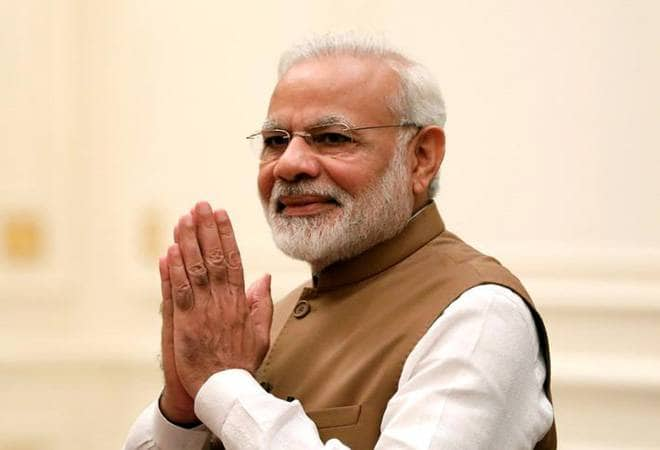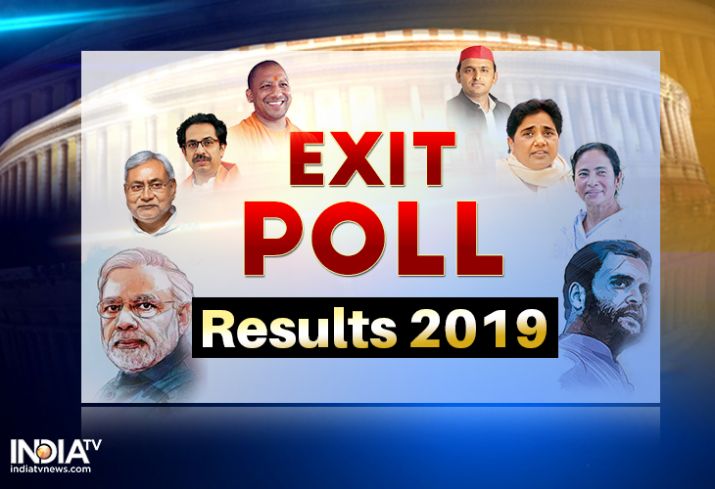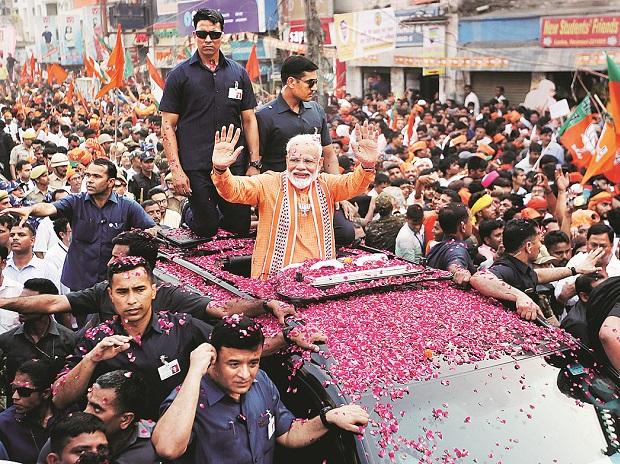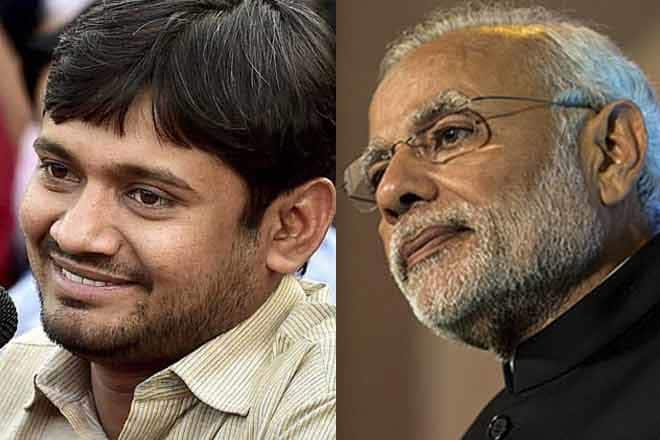
Sustaining a democratic system through periodic free and fair elections is one of the most critical political challenges the world has witnessed. Across countries, people have run the risk of their lives to call for free elections, democratic accountability, the rule of law and respect for human rights. Though elections are widely recognised as the indispensable foundation of democracy, there are concerns in place with respect to the election process and the challenges of negotiating for a credible and transparent political recruitment. When the people believe that elections have been free and fair, they can be a powerful catalyst for political transformation, better governance, and human development. However, in the absence of credible elections, the people would have no recourse to peaceful political change. The risk of conflict increases while corruption, criminalisation, intimidation, and fraud go unchecked, rotting the entire political system from within. New democracies are struggling to consolidate democratic gains, while growing inequality is putting pressure on many older democracies to show that they are relevant to citizens’ concerns and well-being. Across the world, uncontrolled political finance threatens to hollow out democracy and rob it of its unique strengths. India, the world’s largest democracy with the largest electorate, is no exception. Seventy two years of democratic experience tells more stories of its inherent weaknesses than its positives of sustainability. Among the issues in place are questions of electoral dynamics and the inner dynamics of role induction. Many argue that the system calls for restructuring in view of the problems accumulated over time.
The 2019 elections might be a testing time for BJP, unlike the situation in 2014. But it would certainly be critical for the Far-Right Sangh Parivar because the Indian electorate is going to judge if Prime Minister Narendra Modi is still the symbol of the country’s credo of nationalism. The NDA dispensation is determined to move heaven and earth to capitalise the post-Pulwama, post-Balakot sentiments, but it remains to be seen if the pan-Indian electorate will come around this high-voltage campaign.
Even as the 2019 Lok Sabha elections are set to commence in a few weeks time, several questions have emerged with respect to the need for introspection on wider issues concerning the Indian polity. But seldom do these issues get the attention they deserved on account of the diversionary strategies resorted to by the major political parties in the country. There is a perceptible shift in the electoral strategies of these parties that unveils itself with their increasing emphasis on segmented issues that have emotional appeals or foster targetted disparagement. Understandably, corruption continues to be a convenient subject for such segmented engagements. A natural result of this process is the growing tendency to get the basic issues sidelined or being reduced to the symptomatic level. There is hardly any engagement on the structural or institutional causative matrix that produces a pathological condition in the polity.
Structurally, the Indian polity has undergone enormous changes during the last 27 years with hardly any serious debate on the basic issue—but with all attendant implications for the institutions in place and the society at large. The ‘reforms’ that transpired these changes tended to create new regimes of disinvestment that warranted the rollback of the welfare state and dispensing with the norms of social security system. The consequent emergence of the neoliberal state began to displace all regulatory mechanisms in place and institutional commitments that remained for more than four decades since independence. Both the UPA and NDA governments share the responsibility of fostering this dispense-raj through a spectrum of ‘reforms’ that actually resulted in retrogressive practices. Naturally, the Congress and BJP, as well as their allies, tend to sideline the basic problems of the system which have their pervasive impact on the lives and livelihood of the people.
Meanwhile, on the sidelines of the apparent ‘prosperity’ and ‘growth’ trajectory, the country has been going through a spectre of uncomfortable realities—rising urban-rural unemployment, decline in manufacturing, low agricultural and industrial output, uncertain conditions in services sector, shifts and downfall in commodity trade, recession in the financial market etc. The present dispensation, under Prime Minister Narendra Modi, put a veil on vital information concerning the ground level realities, besides manipulating social statistics to suit the campaign requirements of the regime. It was only a few weeks ago that former BJP minister Yashwant Sinha had accused the NDA government of manipulating all the statistics including the growth figures to give a “false impression” of development. He was referring to the circumstances under which two members of the National Statistical Commission had to resign. Sinha said that in the post-demonetisation period also, data were manipulated to show the country’s growth trajectory in exaggerated terms (Outlook 2019).
Narendra Modi came to power in 2014 with an offer of generating 20 million jobs. His first four years in office, however, witnessed a sharp fall off in the job market. The ILO recorded that the number of jobless in the country, in the current year, would have increased to 18.9 million. Given the uncomfortable conditions of the unemployment scenario in the country, the Modi government expectedly resorted to manipulating the methodology of sample survey usually employed by the National Sample Survey (NSS) office periodically (see Daniyal 2019). The Central Statistics Office and the NITI Aayog also did the same with a view to arguing that the growth of the Indian economy was slower under the UPA dispensation. This brought to light questions about the integrity of national institutions and the gross political interference by the government and its agencies, like NITI Aayog. The dismantling of the Planning Commission is a glaring, but an alarming case of how a well-established institution has been replaced by a market-driven auxiliary agency of the crony capital.
This process has its beginning in the 1980s when the first spell of liberalisation ushered in. The Congress party became instrumental in effecting this shift in diverse areas of the polity and economy. Interestingly, the social base of the Congress itself began to undergo major structural changes in the post-emergency period, particularly after 1981. Though the Congress could still win the elections, its social landscape witnessed expanding frustration of its traditional vote bank, including the emerging urban middle class. In states like UP and other densely populated regions, the deep frustration found expression in their voting pattern. Rising unemployment in traditional sectors, besides shrinking opportunities in the emerging industrial fields, brought in greater uncertainties and unsure pathways. The Far Right under the BJP and its allies since 1980s began to capitalise this deeper social crisis by effectively manipulating the ‘cultural crisis’ set in by the Ayodhya issue, on the one hand, and the common civil code (post-Shah Bano case) controversy, on the other. Occasionally, the Sangh Parivar also used ‘swadeshi’ and hyper nationalism to cover-up its commitment to a much faster neoliberal path of development. The social crisis caused by the dispense-raj naturally disrupted social solidarity of the Indian polity which paved the way for BJP making inroads into the social base, which the Congress traditionally held for long (Seethi 2017).
As years passed, the BJP also came out in open to accelerate the pace of ‘reforms’, the consequences of which are much deeper. Yet, the Congress couldn’t come forward with any alternative as the BJP has already co-opted its policy regime, using ‘culture’ as a social shield of countering and containing emerging social unrest. The success of Modi is his regime of ‘event’ managing the social constituency by negotiating with traditional caste groups even as it has been maintaining a ‘panoptican’ state in terms of monitoring and controlling its potential ‘enemies’ and ‘friends’(Ibid). There were reports of intolerance and violence unleashed across the country, in the wake of dissent and widespread criticism. Plausibly, this would continue to raise questions of survival under a surveillance raj.
A much greater advantage of the Modi regime is the global atmospheric pressure which fits in with a Far Right ‘historical bloc’ (as Gramsci referred to in the context of West European capitalist scenario). The post-global financial crisis and post-Euro zone crisis reminded both the US and UK that they needed to revisit their neoliberal globalist regimes, the implications of which are unpredictable at least for some time. Modi too will have to face the long term consequences of this structural shift in the global economy. But the social crisis got deepened in diverse forms, including communalisation and its natural result of disruption in social solidarity. The Congress has apparently no alternative social agenda. It has the sole agenda of meeting the ‘threat’ from BJP while the threats from social dislocations caused by the ‘austerity’ regime are much deeper, fundamental and all-pervading.
While the issues raised here may remain, though fundamental as they were, the election process that has begun now may not reflect these underlying problems and practices, ostensibly due to a surreptitious ‘consensus’ among the mainstream parties on a variety of issues. Hence, the campaign mode is set to address only symptoms of the pathological condition.
Even as the structural matrix of the Indian polity continues to sustain its neoliberal moorings, the institutional practices and watchdog mechanisms undergo phases of challenge – it included independence and integrity of judiciary, election commission, investigating agencies etc. This naturally raises several questions about democratic precepts and constitutional mechanisms in place.
It is against this backdrop that the attempts at electoral reforms in India are viewed as critical in sustaining good practices in democracy and ensuring transparency and credibility in the political recruitment process. The agenda of electoral reforms is to ensure deepening of the democratic process, strengthening the instruments of public accountability and guaranteeing opportunity for meaningful voter participation. Hence the debate on electoral reforms must address questions of enhancing representativeness, promoting societal accommodation and conciliation, incorporating constitutional and international safeguards to vulnerable groups, providing accountable, stable and efficient governance etc.
Many find several gaps in the electoral system already in place which tends to undermine the very process of transfer of power and the freedom of the individual voter. The legal foundation is fragile which allows the distortions to remain in the polity. It is said that the political class is still unwilling to reform the system which may empower the voter as against the power they enjoy at present in manipulating the system. Some would argue that the system of preferential voting is the answer to problem of “fictitious” representation under the existing electoral practices. It has been warned that unless the mounting expense for electoral campaign is curtailed drastically, the system would continue to be the monopoly of the rich and democracy will transform into plutocracy.
It is true that the electoral reforms debate, initiated since the late 1960s, almost coincided with a radical transformation in Indian politics such as the rise of regional political formations, and the consequent decline of the ‘monolithic’ character of the major political formation, the INC. However, the political class in India realised that appeal of the ideology or nationalism or policies or programmes was not strong enough to secure the support of the people. This obviously helped strengthen money and muscle power which began to dictate the electoral politics in India. Though everyone agrees on the need for reforms, there is hardly any consensus on the substance of the reform.
Obviously, electoral reforms have to go beyond voters and their behaviour because India’s growing middle and upper class is under siege – in the hands of big capital and corporate class. There is also a perceptible shift from social democracy to market democracy which is undermining the public space and redefining what life ought to be. It may again be curious to know how mounting money power influences the Indian elections. Let us turn our attention to the growing presence of business interest in the Union and State Legislatures. It has been warned by many that direct representation of business in legislatures has much more serious consequences for policy making than influencing it through funding parties from outside.
One major example of a ‘reform’ introduced in the system, recently, may be noted for its inherent genetic defect. The NDA Government announced, in its 2017 budget, that electoral bonds would be issued to “cleanse the system of political funding in the country” which would also fall in line with the Government’s move to strengthen ‘cashless economy.’ Electoral bonds would be put in place as bearer instrument like a Promissory Note (like a bank note that is payable to the bearer on demand and free of interest). It can be bought by any citizen of India or a body incorporated in India. This was introduced after changes in the Finance Act 2017 and subsequent amendments in the Income Tax Act, the RBI Act, and the Representation of People Act.
Experts and policy makers, including former chief election commissioners have already come down against the move for undermining transparency in the name of “cleansing the system.” It inevitably makes political funding by big companies and business contractors secretive as neither the donors nor the parties have to make public who donated what to which party. This is seen as a blatant violation of the constitutional principle of free and fair elections. The CPI (M) filed a petition in the Supreme Court on this issue. It opposed the electoral bonds on the ground that the move would only legitimise corruption. Prakash Karat wrote:
The donations made through anonymous bonds will only facilitate and legitimise bribery. Earlier, a company which won a contract would have had to pay a bribe illegally under the table. The electoral bond scheme will make all such kickbacks legal. For instance, if a commission of 10 per cent has to be paid by a company for getting a contract worth Rs 1,000 crore, all it has to do is to provide an electoral bond for the amount of Rs 100 crore to the ruling party. There is no way for the public to know about such a donation, nor can any investigating agency ask questions about it. …The Modi government has found a way to legitimise bribery and kickbacks. For instance, in the Rafale deal, the Anil Ambani company has been given the offsets contract when it has no legitimate grounds whatsoever for getting the contract. The quid pro quo for such a deal can now be possibly in the form of electoral bonds to the BJP, with no questions asked whatsoever(Karat 2019).
In an affidavit, the NDA government argued that the electoral bonds would uphold transparency in funding and donations received by political parties. Countering the CPI(M) petition, the NDA Government argued,
the scheme envisages building a transparent system of acquiring bonds with validated KYC and an audit trail. Besides, a limited window and a very short maturity period shall make any misuse improbable. Donors who buy these bonds, their balance sheet will reflect such donations made. The electoral bonds will prompt donors to take the banking route to donate, with their identity captured by the issuing authority. This will ensure transparency, accountability and a big step towards electoral reform (Sebastian 2019).
The Economic Times reported that the BJP became the biggest beneficiary of the electoral bond scheme launched by the NDA government in 2017-18, securing almost 95 per cent of the bonds worth over Rs. 200 crore. The audit and income tax reports submitted by the BJP to the Election Commission of India revealed this (The Economic Times 2018). According to New Delhi-based Centre for Media Studies, the spending on election is likely to increase substantially in the coming weeks, and the Chairman of the Centre went to the extent of cautioning that the new move would amount to “auctioning of our democracy to the highest-paying corporation” (Sabrang India 2019). With amendments being put in place, companies can donate to political parties and their campaigns, even removing the ceiling on corporate donations. Curiously, new business concerns can also donate to political parties, facilitating new companies to be set up exclusively for the purpose. The ‘reform’ also removed mandatory requirements for companies to reveal how much they donated and to which party.
The amendments were introduced in the Lok Sabha as a money bill to bypass the Upper House, to get away from a possible setback there. Sabrang India reported that “a similar tactic was used to pass with little debate rules that changed the definition of a foreign company. Previously, all subsidiaries of international entities were treated as overseas donors and not allowed to make political contributions. Now if a foreign firm has a stake of less than 50 per cent in a company operating in India, that unit can fund Indian elections.” Sabrang also noted that while several experts and lawmakers protested the moves, the amendment is expected to benefit both Bharatiya Janata Party as well as the main opposition Congress party. As such “nobody from the opposition spoke up because they too could gain if they came to power” (Sabrang India 2019).
According to experts, if the donation is made to the ruling dispensation, “the electorate would have no way of knowing the extent of crony capitalism because the party in power would obviously ‘reward’ major and significant donors with government contracts, licenses and tenders. Moreover, the government in power would get detailed information on which the corporation has donated what amount, and can thus arm twist those who have funded its rivals more.” Former chief election commissioner S Y Quraishi said that the “electoral bonds are the exact antithesis of transparency.” He pointed out that the bonds might “ensure the anonymity” of donors, but would “also kill whatever little transparency that exists now.”
The issues outlined here represent only a cross section of the challenges the Indian polity has been going through. The past five years witnessed several levels of violence – from caste, communal and gender violence to aggressive campaigns and attacks on individuals and movements for freedom of expression, rights on food, health, education, employment, wages, reservation etc. As the issues get snowballed, BJP’s hyper-nationalist campaigns tend to assume new dimensions and a feverish pitch. The Pulwama terrorist attack and the Balakot airstrikes are thus likely to become rallying points to externalise the mounting internal problems. BJP knows—more than any other party in this country—that ‘national security’ could be a comfortable terrain to bank upon in times of crisis. Obviously, the structural crisis of the Indian polity gets worsened with each episode of campaigns playing down the real issues in Indian polity.
An earlier draft was presented as the Keynote address at the National Seminar on “Electoral Politics in India: Dynamics and Trends” organised by the VK Sukumaran Nayar Chair for Parliamentary Affairs, under the Department of Political Science, University of Kerala.
This write up has also appeared in the Global South Colloquy. The author is Dean of Social Sciences and Professor, School of International Relations and Politics, Mahatma Gandhi University, Kerala. He can be reached at [email protected]
References
Daniyal Shoaib (2019): “ Modi government bid to hide unemployment rate, other key data hurts Indian democracy,” Scroll.in, 31 January, available at https://scroll.in/article/911442/the-daily-fix-modi-governments-moves-to-hide-official-statistics-greatly-damages-indian-democracy
Karat, Prakash (2019): “No to Electoral Bonds,” Peoples Democracy, 24 March, available at https://peoplesdemocracy.in/2018/1125_pd/no-electoral-bonds
Outlook (2019): “Modi Government First In India’s History To Manipulate Data, Says Yashwant Sinha After NSSO Report,” 1 February, https://www.outlookindia.com/website/story/india-news-modi-government-first-in-indias-history-to-manipulate-data-says-yashwant-sinha-after-nsso-report/324676
Sabrang India (2019): “Is India’s democracy being sold through electoral bonds?, 22 March, available at https://www.sabrangindia.in/article/indias-democracy-being-sold-through-electoral-bonds
Sebastian, Manu (2019): “Anonymous Electoral Bonds Promote Transparency In Funding of Political Parties, Centre Tells SC,” Livelaw.in, 14 March, available at https://www.livelaw.in/top-stories/anonymous-electoral-bonds-promote-transparency-in-funding-of-political-parties-centre-tells-sc-143559
Seethi, K.M. (2017): “Tectonic Shift In ‘Congress System’: Debating ‘Leadership’ and Silence on Policy Regime,” Countercurrents, 18 March, available at https://countercurrents.org/2017/03/18/tectonic-shift-in-congress-system-debating-leadership-and-silence-on-policy-regime/
The Economic Times (2018): “Electoral bonds: Ruling BJP bags 95% of funds,” 29 November, available at https://economictimes.indiatimes.com/news/politics-and-nation/electoral-bonds-ruling-bjp-bags-95-of-funds/articleshow/66858037.cms
















































